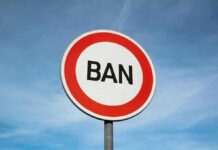
India’s pharmaceutical industry faces a deadly reckoning as contaminated cough syrups containing industrial toxins claim another generation of innocent children.
Story Overview
- Over 20 children recently died from cough syrups containing diethylene glycol and ethylene glycol
- This represents a recurring pattern spanning decades, with nearly 70 deaths in The Gambia alone in 2022
- Major pharmaceutical companies including Kayson Pharma and Norris Medicines face scrutiny
- India’s massive pharmaceutical export industry confronts potential global reputation damage
The Toxic Recipe for Tragedy
Diethylene glycol and ethylene glycol sound like chemistry class nightmares, but they’re industrial chemicals that somehow found their way into children’s medicine bottles. These compounds, typically used in antifreeze and brake fluid, cause kidney failure and death when ingested by humans. The contamination isn’t accidental mixing or cross-contamination during manufacturing. These chemicals were deliberately substituted for safer, more expensive ingredients like propylene glycol.
The cost savings from this substitution amounts to pennies per bottle, yet pharmaceutical manufacturers chose profit margins over children’s lives. This calculated decision transforms what should be healing medicine into a poison that attacks young kidneys with ruthless efficiency. Parents trusted these syrups to soothe their children’s coughs, never imagining they were administering a death sentence.
A Pattern of Preventable Deaths
This isn’t India’s first rodeo with killer cough syrup. The country’s pharmaceutical industry has repeatedly produced contaminated medications that have killed children worldwide. The 2022 incident in The Gambia saw nearly 70 children die from Indian-made syrups containing the same toxic compounds. Similar deaths occurred in Indonesia, with the pattern stretching back decades across multiple countries and manufacturers.
The World Health Organization has issued multiple alerts about Indian pharmaceutical products, yet the deaths continue. Each incident follows an eerily similar script: children develop sudden kidney problems after taking cough syrup, families rush to hospitals, and doctors discover the medicine contained industrial poison. The repetitive nature of these tragedies suggests systemic failure rather than isolated manufacturing errors.
Regulatory Theater vs Real Oversight
India’s drug regulatory system operates more like theater than genuine oversight. The country boasts about being the world’s pharmacy, supplying affordable medications globally, yet consistently fails to ensure basic safety standards. Regulatory agencies suspend licenses and ban batches only after children die, treating safety as an afterthought rather than a prerequisite.
The government’s response follows a predictable pattern: express outrage, promise investigations, suspend a few licenses, then return to business as usual. This reactive approach treats dead children as acceptable collateral damage in maintaining India’s pharmaceutical export revenues. Real regulatory oversight would prevent contamination before production, not scramble for accountability after funerals.
The Price of Choosing Profit Over Children
India’s pharmaceutical industry prioritizes market share and profit margins over fundamental safety measures that other countries consider non-negotiable. The cost difference between toxic diethylene glycol and safe propylene glycol represents a fraction of manufacturing expenses, yet companies consistently choose the deadly option. This decision-making process reveals an industry culture that views children’s lives as acceptable trade-offs for minimal cost savings.
The economic incentives remain perverse: companies face minor penalties for killing children but massive profits from maintaining low production costs. Until the financial consequences of poisoning children exceed the profits from using industrial chemicals, the deaths will continue. The current system essentially rewards manufacturers for gambling with children’s lives while providing minimal downside risk.
Sources:
More than 20 kids in India have died from contaminated cough syrup. Who’s to blame? – CT Public
Contaminated Cough Syrup India – Economic Times
Contaminated cough syrup from India linked to 70 child deaths. It’s happened before – Ideastream
Contaminated Cough Syrup – Economic Times

































